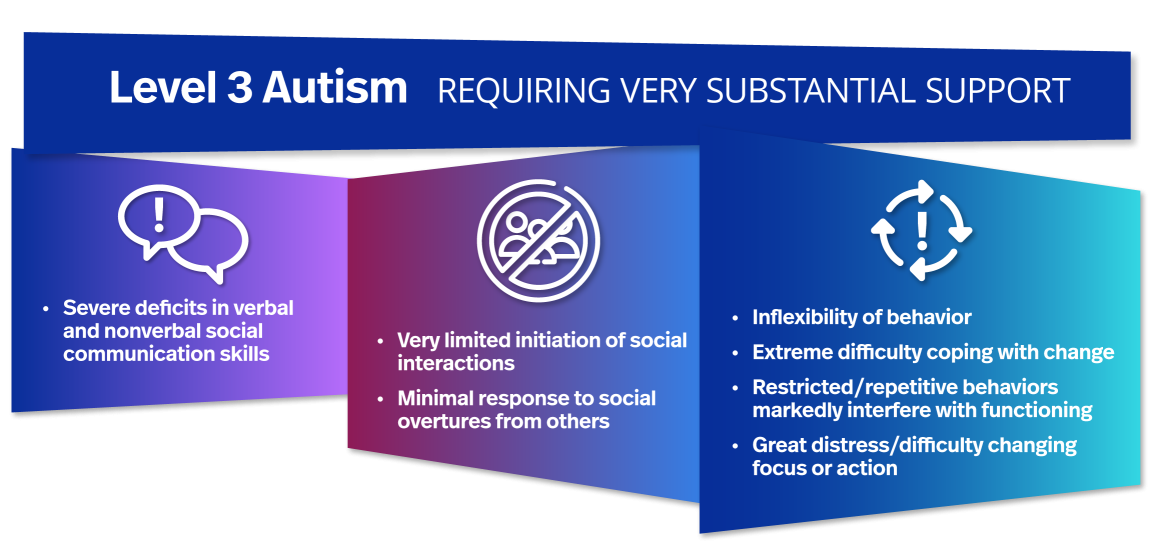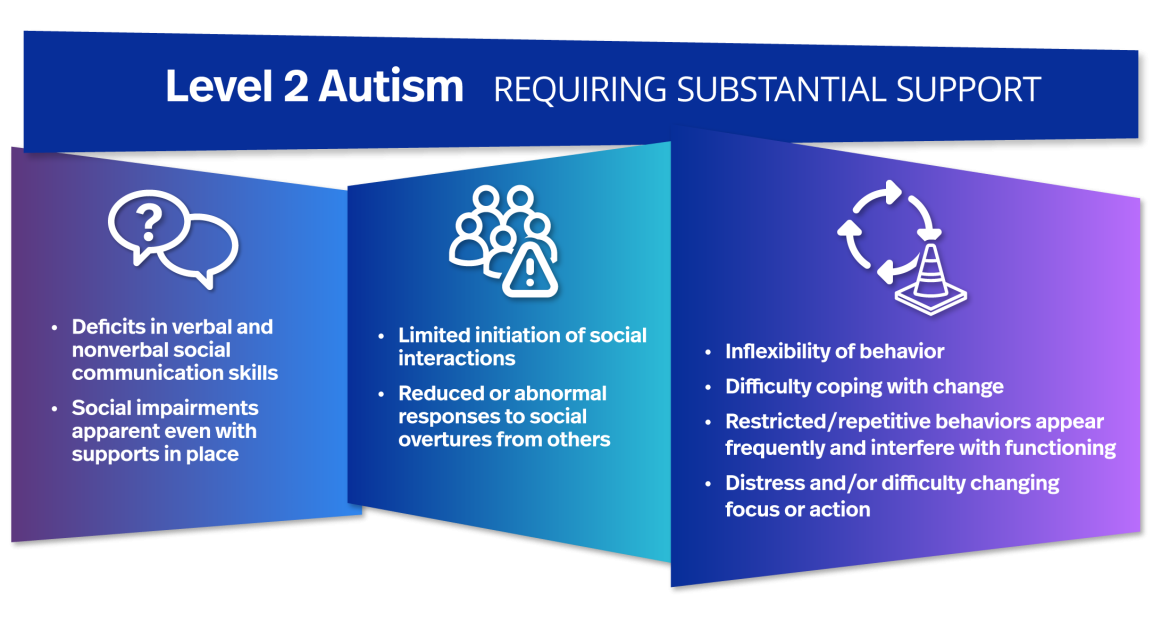ASD levels of severity
In 2013, the American Psychiatric Association (APA) released the fifth edition of the Diagnostic and Statistical Manual of Mental Disorders (DSM-5), the handbook used to diagnose of mental disorders, including autism.
The DSM-5 introduced three ASD levels of severity: level 1 (“requiring support”), level 2 (“requiring substantial support”), and level 3 (“requiring very substantial support”). The full-text of the DSM-5 severity levels for autism spectrum disorder (ASD) is provided below with permission from the APA.
Severity levels for autism spectrum disorder
Level 3 autism: “Requiring very substantial support”
Social communication
Severe deficits in verbal and nonverbal social communication skills cause severe impairments in functioning, very limited initiation of social interactions, and minimal response to social overtures from others. For example, a person with few words of intelligible speech who rarely initiates interaction and, when he or she does, makes unusual approaches to meet needs only and responds to only very direct social approaches
Restricted, repetitive behaviors
Inflexibility of behavior, extreme difficulty coping with change, or other restricted/repetitive behaviors markedly interfere with functioning in all spheres. Great distress/difficulty changing focus or action.
Level 2 autism: “Requiring substantial support”
Social communication
Marked deficits in verbal and nonverbal social communication skills; social impairments apparent even with supports in place; limited initiation of social interactions; and reduced or abnormal responses to social overtures from others. For example, a person who speaks simple sentences, whose interaction is limited to narrow special interests, and how has markedly odd nonverbal communication.
Restricted, repetitive behaviors
Inflexibility of behavior, difficulty coping with change, or other restricted/repetitive behaviors appear frequently enough to be obvious to the casual observer and interfere with functioning in a variety of contexts. Distress and/or difficulty changing focus or action.
Level 1 autism: “Requiring support”
Social communication
Without supports in place, deficits in social communication cause noticeable impairments. Difficulty initiating social interactions, and clear examples of atypical or unsuccessful response to social overtures of others. May appear to have decreased interest in social interactions. For example, a person who is able to speak in full sentences and engages in communication but whose to- and-fro conversation with others fails, and whose attempts to make friends are odd and typically unsuccessful.
Restricted, repetitive behaviors
Inflexibility of behavior causes significant interference with functioning in one or more contexts. Difficulty switching between activities. Problems of organization and planning hamper independence.
Related resources
- Answers to frequently asked questions about DSM-5 criteria for autism
- Take a two-minute screening of your child’s behavior
- Find local providers and autism services in your area
Contact the Autism Response Team
Autism Speaks' Autism Response Team can help you with information, resources and opportunities.
- In English: 888-288-4762 | help@autismspeaks.org
- En Español: 888-772-9050 | ayuda@autismspeaks.org



